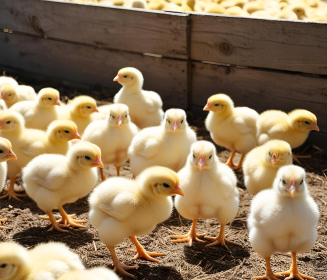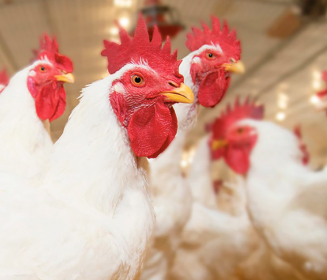At 5 months of hatch, the hen can already lay eggs; the laying period lasts approximately 12-14 months, after this time the animals are usually taken to slaughter.
08 Jun 2021
Peculiarities and development of the hen’s reproductive system
The hen's reproductive system presents a totally different development from that of mammals and a series of peculiarities that make it unique.
Content available at:
Español (Spanish) العربية (Arabic)
The hen’s reproductive system presents a totally different development from that of mammals and a series of peculiarities that make it unique.
Some peculiarities of the hen’s reproductive system, from an anatomical point of view, are that they only have a left ovary and that the oviduct can measure up to 70cm. They have a special uterus, the goal of which is the formation of the eggshell. These animals, unlike mammals, do not have a sexual cycle. They also do not have a urinary bladder, the ureters open directly into the small intestine.
A newly hatched chick already has follicles formed in the ovary (between 2,000 and 12,000), but still very small. At 7 days of embryonic development, the left ovary has fully developed, and reminiscences of the super atrophied right oviduct can be seen.
During the rearing period, about 20 weeks, the pullet eats but does not lay eggs. At 16 weeks of life, the ovary weighs about 50 grams.
When the hen passes 20 weeks and already lays eggs, the ovary looks like a bunch of grapes, with grains of different sizes. There may be yolks up to 4cm in diameter. This is called the ranking of the follicles.
During the first 14 days, follicle growth is very slow. When they are 4 days before hatching, the growth is exponential.
The yolk or follicle is made up of a microscopic ovule and nutritional material. In the center of the yolk, we will find the germ cell (ovum) with different layers around it. This arrangement would prevent the penetration of the sperm to the center, so there is an emigration of the ovum from the center of the yolk to the periphery. The mark it leaves in the form of a channel marks its trajectory.
At the end of maturation, the follicle gradually enhances its orange color due to the accumulation of fat-soluble feed pigments. For this reason, the follicles of the youngest hens are whiter.
When the follicle ruptures, the ovum is expelled. The hierarchy refers to the temporal order of hatching of the follicles and the expulsion of the ovules. This is probably linked to the different caliber of the vessels that supply the follicles, which implies a difference in the contribution of nutrients and hormones.
TO CONTINUE READING REGISTER IT IS COMPLETELY FREE
Access to articles in PDF
Keep up to date with our newsletters
Receive the magazine for free in digital version
REGISTRATION
ACCESS
YOUR ACCOUNT
LOGIN
Lost your password?







































